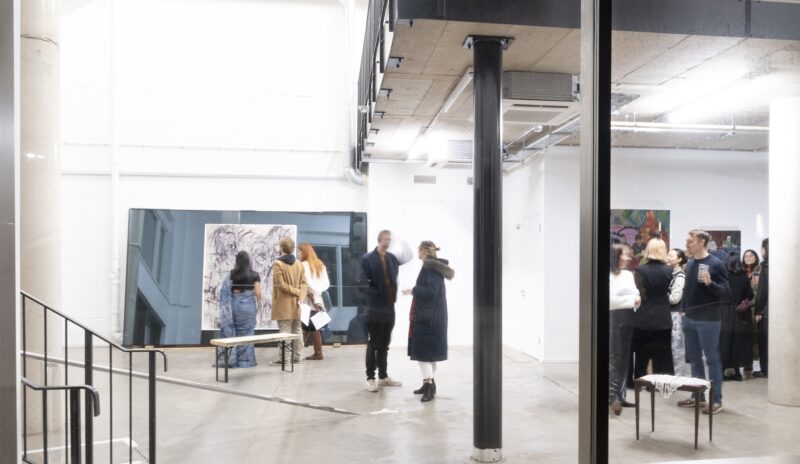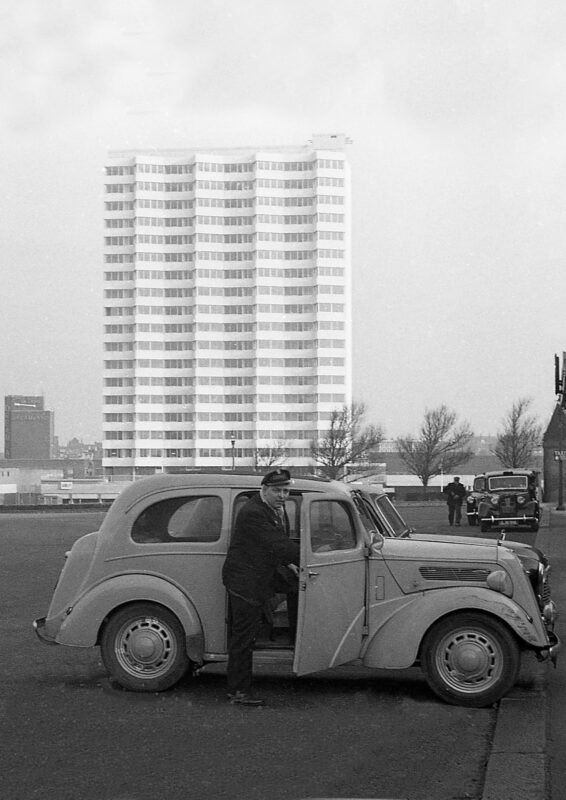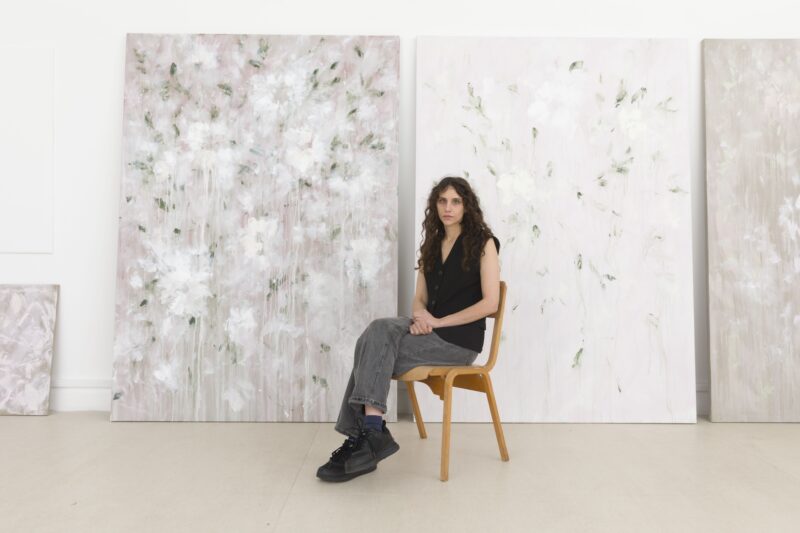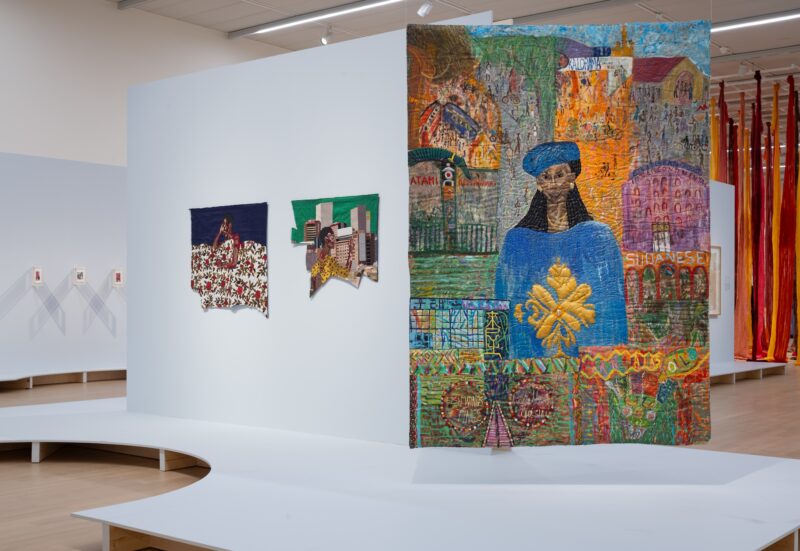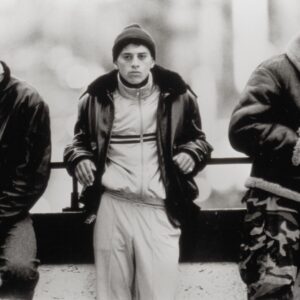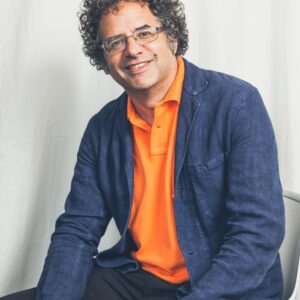Blood clots, flailing limbs and fleshy bodies. The human figure — with all its innards, darkness, emotion and complexity — was disembowelled and spilled onto the canvas at Tracey Emin’s latest TEARS artist residency show at TKE Studios in Margate.
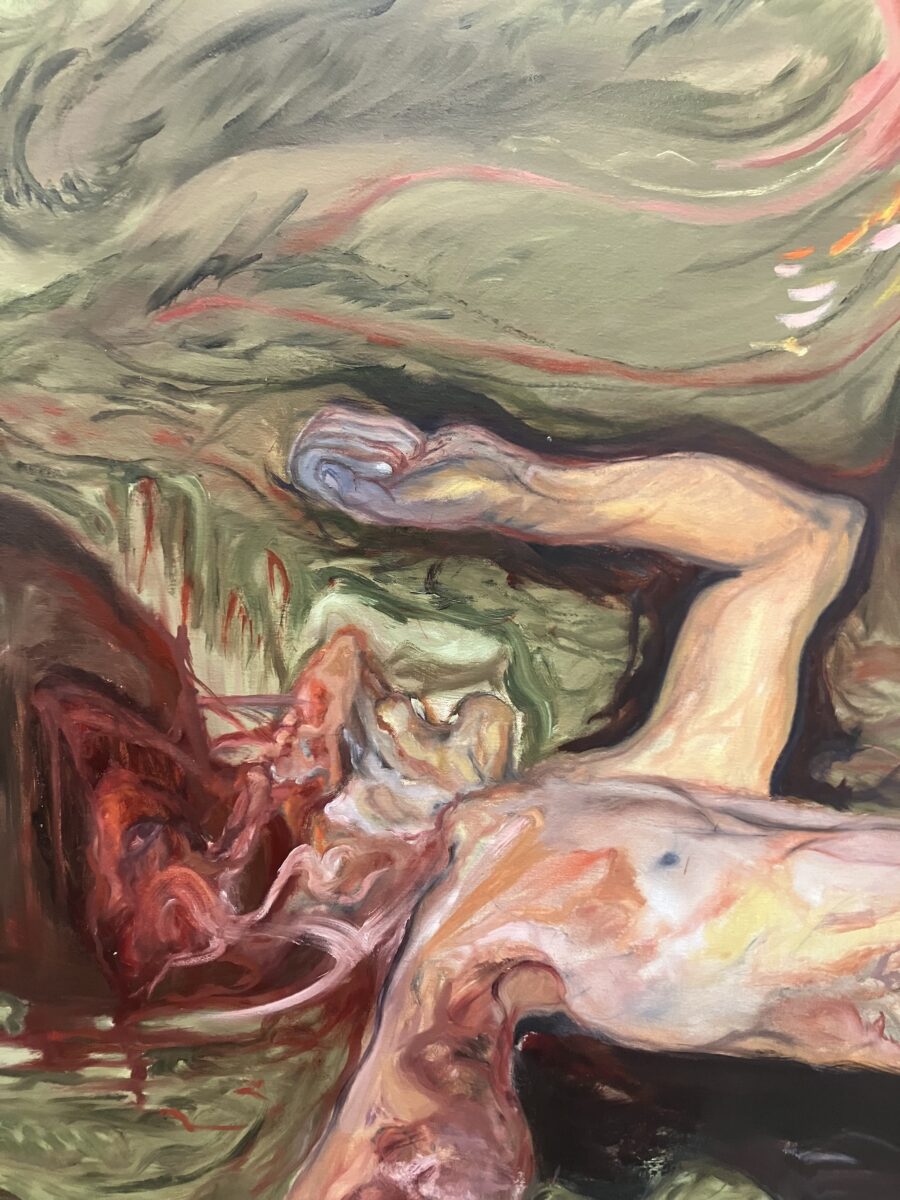
Walk into the former bathhouse, and to your left, and you have Jorge K Cruz’s Night of Fear and Longing. It is a brutal picture. A faceless woman lies on a white bed. She is painted like a bruise. There’s purples, yellows; the daubed reds look like dried blood clots. The bedpost itself becomes a hunk of meat. And behind lie some threadbare curtains that attempt to cover a flood of red ahead. It all feels very Edvard Munch coded.
Jorge K Cruz is one of the eight emerging artists on show at Tracey Emin’s TEARS residency, an 18-month subsidised programme at TKE studios, along with Darcy Brenna, Helen Teede, Emmie Nume, Anna Pakosz, Bianca Raffaella, Grace Alexandria, and Lola Stong-Brett.

Move into the main space (where the pool would have originally been), and to your immediate right is My Master, by Helen Teede. The first thing you notice about the painting is the figure’s hands. Smeared in a deep crimson red, like a vet that has just assisted with birthing a large mammal, the blood goes up the elbow on both arms.

More blood on hands. Titled simply Clot, by Darcy Brenna (her previous show ran along a similar theme, titled Lungs, Limbs, and Lovers at the Ramsey & Williams Gallery in Margate), she depicts thick impastoed, bulbous marks of deep purple reds an outline of hands and arms, flanking a body, cropped from navel to knees.
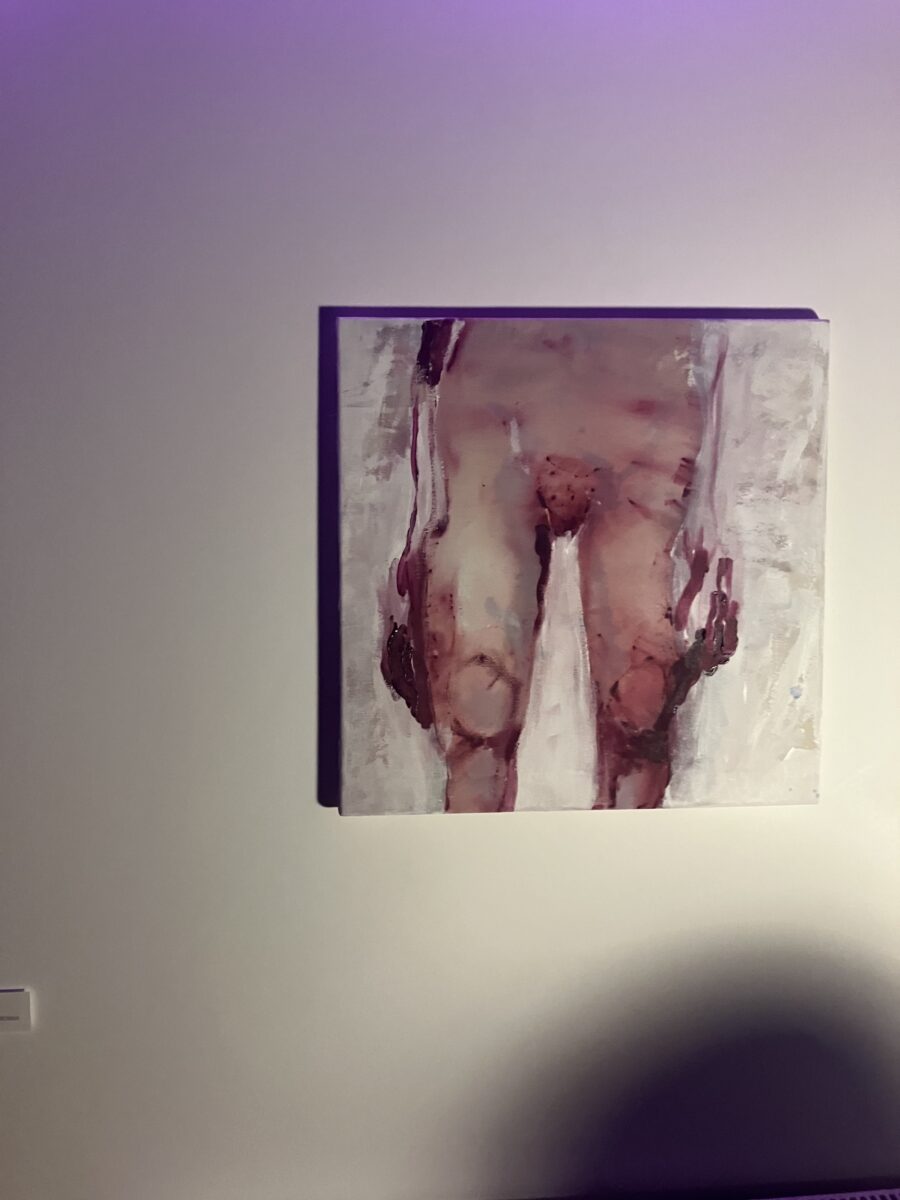
A direct influence of these works is Tracey Emin herself. Her current exhibition, Lovers Grave, currently on at White Cube in New York, with works like There was Blood (2022), makes it impossible to not see a connection. Indirectly are also the renewed discussions around the unruly, physical body in Feminist art and theory; first with Lauren Elkin’s recently published Art Monsters, second with Emma Dabiri’s latest, Disobedient Bodies.
Taking pleasure in the banal physicality of bodies was something art critic and historian Aruna D’Souza said is ‘the most anti-patriarchal gesture I could imagine’. Crediting her former teacher, Linda Nochlin (who famously authored Why Have There Been No Great Women Artists?) with this way of seeing, she explained saying ‘yes, there was the male gaze, and the objectification of the female body, and yadda yadda yadda but that’s not what Linda spent most time on. Instead, Nochlin trained her students to look at the particularities of the bodies — the swell and fold of flesh, the blemishes, the meandering veins, the curl of hair, the straining muscle.’
The body today is so politically fraught. The struggle for bodily freedom; the freedom to take up space in a body, the freedom to move around in one, that just by looking at it, not as an object of desire, or as images of beauty, or as a projection of anything else, but just as it exists physically, feels like an act of resistance. Or as a way to begin again. Perhaps this is what these works go some way to explore.
TEARS is open 12-4 every weekend at TKE Studios until 28th January 2024
